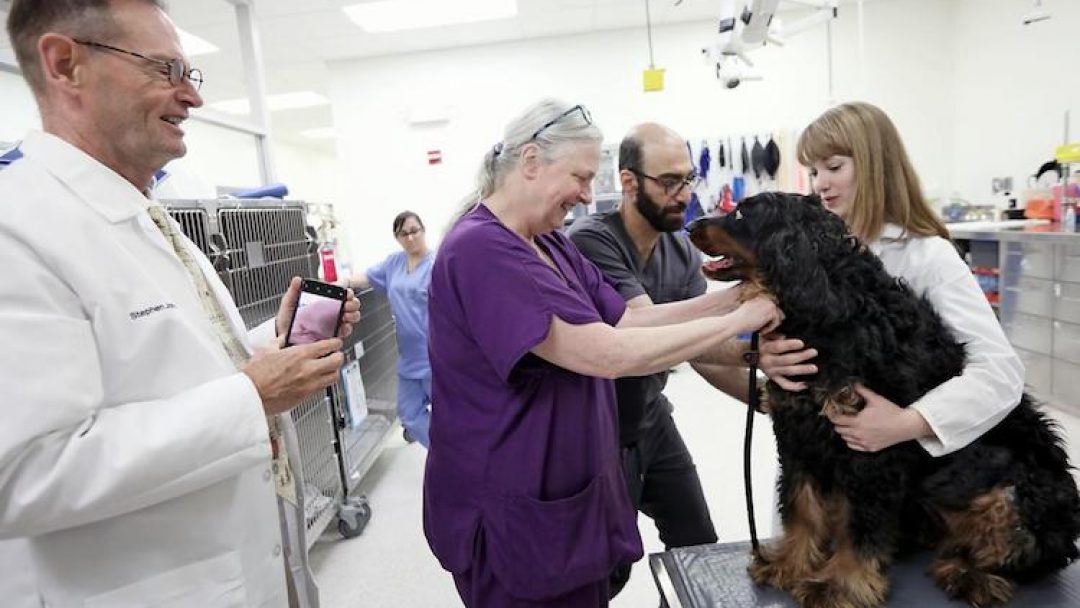- Home
- The Community News
- ASU Professor Leads Charge For The First Cancer Vaccine For Canines

ASU Professor Leads Charge For The First Cancer Vaccine For Canines
Trilly, a 9-year-old Gordon setter, just received a shot with the first vaccine to prevent cancer.
“First one. We did it!” said Stephen Johnston, a Arizona State University scientist and a professor in the School of Life Sciences.
Johnston has worked for 12 years to develop a new approach to preventing and treating cancer.
“If this can work in dogs — and that’s a big if — then we believe it can work in people too,” said Johnston.
He developed the vaccine because cancer is the No. 1 cause of illness and death in older dogs. One out of three dogs are affected by cancer, and 6 million dogs are diagnosed every year.
The dogs in the study were either given a vaccine or placebo. They will be monitored during the study. More than 800 dogs will be enrolled, and it was the largest clinical trial conducted to date.
The UW School of Veterinary Medicine is one of three institutions participating. Colorado State University and University of California are also participating.
“We’re testing a totally novel way of creating an anticancer immune response,” said David Vail, a professor and oncologist at the UW School of
Veterinary Medicine. “The holy grail would be to prevent cancer as opposed to waiting for it to start and then treating it.”
The vaccine is made up of approximately 30 abnormal proteins found on the surface of cancer cells.
By injecting the proteins into healthy patients, along with a substance that will stimulate an immune response, the vaccine could prevent cancer.
The vaccine will target, osteosarcoma, hemangiosarcoma, and mastocytomas.
During the trial, two sets of vaccines are given every two weeks, for a total of four treatments. They are then given annually.
“We should know as soon as two years from now whether or not we see the vaccine is having an effect,” said Johnston.
If the trial is successful, there are plans to create a vaccine for humans, but, even after the vaccine is developed, it will be five to ten years before it could be used.
“This is probably the only approach to this type of vaccine, so we feel we have to try it,” said Johnston. “The implications of success would be quite large — for dogs and people.”
